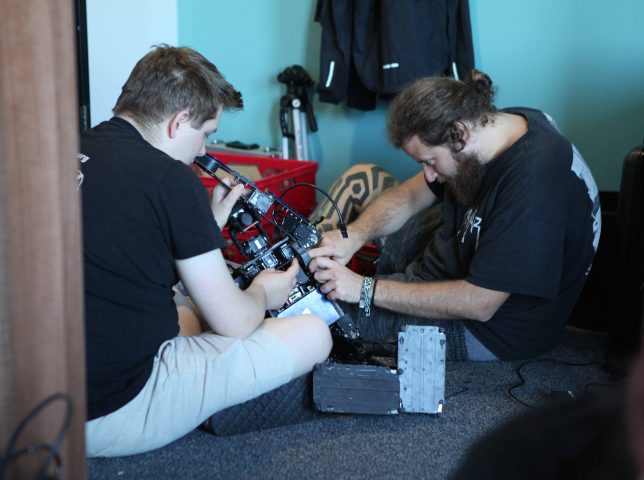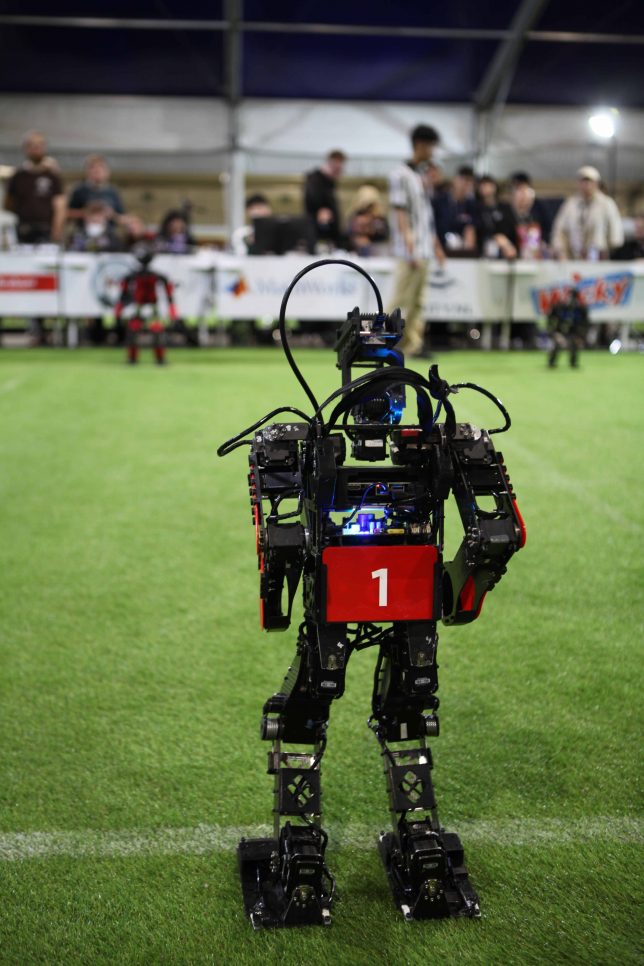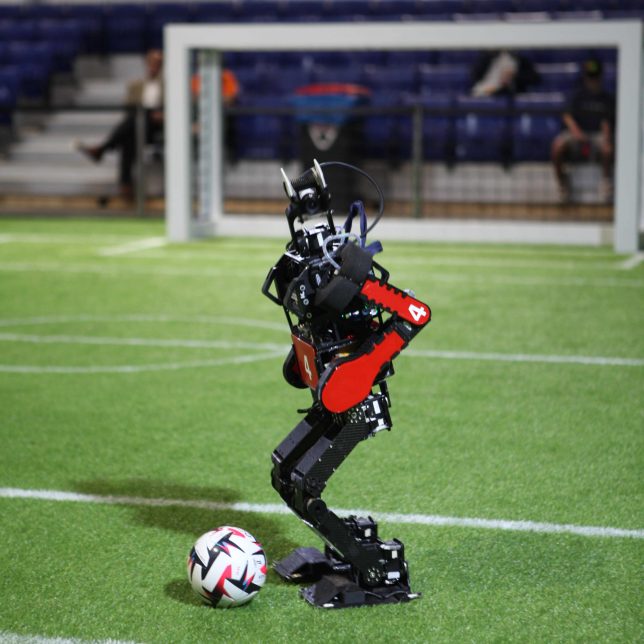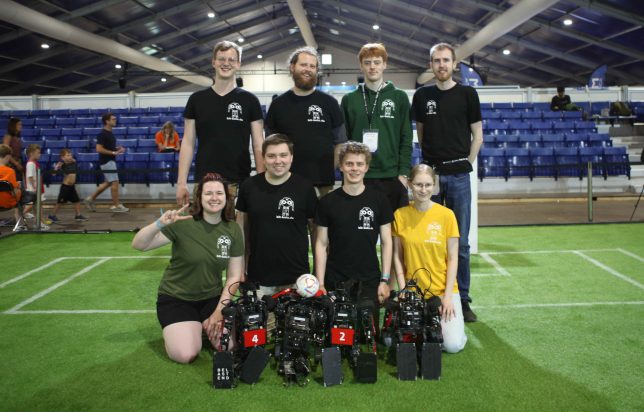From July 15th to 21st, the RoboCup 2024 took place in Eindhoven. To allow enough preparation time on-site, we set off as early as June 12th. This year, we again decided to rent a car for the trip, which accompanied us in Eindhoven and also brought us back home safely. The car gave us plenty of space for everything we needed, and we made good use of it.

In Eindhoven, the Social Hub awaited us (our accommodation for the coming days). Here, we cooked together, checked our robots, made adjustments, and worked on small software tweaks.


On Monday, July 15th, 2024, we were able to enter the hall—or rather, the tent. It was a fairly large tent with solid flooring, no windows, and highly variable temperatures. There was an air conditioner that overcooled the space when outdoor temperatures were cooler and was not very effective during warmer weather. Inside the tent were various soccer fields (4 for our league, one for the Adult Size league next door), a robot band, a stage, the Logistics, @Home, and @Work leagues, and a merchandise shop.

We soon got to work setting up, arranging our table, putting robots on the field, and using our new flasher case for testing. The flasher case includes everything needed to power 4 robots and connect them to a computer. It is mainly used during pre-game preparations to boot up all robots and update them with the latest software. However, it also has everything necessary for testing.



In general, we worked very little on software during this World Cup because we were quite satisfied with our software status. Instead, we focused more on hardware. Early on, we decided to replace the thigh spacers, which separate the parallel leg plates, with more stable 3D-printed parts. We also removed the studs from our robot feet and used screws as studs instead because the artificial grass was very slippery.


On July 18th, 2024, things got more serious: the Drop-In Games began. In these games, each team provides just one robot, which teams up with robots from other teams to play against a similarly assembled group. Generally, there is little team strategy in these matches because the robots rarely communicate with one another. Points are awarded if our robot scores goals. Additionally, points are awarded to robots that play in the same team and are on the field when a goal is scored. At the end of the Drop-In Games, 4 teams had scored goals, and the Bit-Bots were one of them! For the first time ever, we scored a goal in a Drop-In Game. However, there was also a setback: one of our robots (Amy) suffered damage to its electronics after a fall and could not be used for the remainder of the RoboCup. We were now down to only three robots for the upcoming matches.

After the Drop-In Games, the group stage followed. Here, we were in a group with the IT Androids, the NUbots, and Ichiro. Our first match against the IT Androids ended with a 4:0 victory. We had never scored so many goals in a real match before. Against the NUbots, we had already won a friendly match earlier during the tournament, so our chances of winning this match were high. Unfortunately, we were knocked over in the center circle by the NUbots in such an unlucky way that we got disoriented. Normally, the robot uses the IMU during a fall to counteract such situations, but due to a combination of factors, this did not work, and our robot accidentally scored a goal for the opposing team. Thus, the game ended in a 1:1 draw. The last game in this round was one of the most exciting, with many duels and narrow goals. Additionally, by chance, we were given a completely blue ball, which our image recognition system was not well-configured to handle (balls usually have some white on them). As a result, our robots could not see the ball from a distance, and it remained untouched near the opponent’s goal for almost half the game. Ultimately, we lost the match 0:2. After this match, we decided to rewrite our ball-searching behavior, instructing the robot to walk to different points on the field to search for the ball if it could not find it at its initial location.




In the Round of 16, we faced the WF Wolves, the only other German team in the Humanoid Kid Size league. This team also developed the robot platform we use, so our robots look quite similar. The Wolves were also the team we had played against and beaten several times earlier in the year at the German Open in Kassel. As a result, the Wolves knew us well and tried hard to prevent us from scoring goals. This led to many falls and, consequently, significant damage to our robots. Ultimately, we won this grueling match 2:0, both goals resulting from situations where we kicked the ball close to the opponent’s goal, and the opponent accidentally scored an own goal.

In the quarterfinals, we faced Kura, a very strong team that eventually made it to the final. We prepared for the likelihood of losing but still worked on some potential improvements: a goalkeeper behavior where the robot crouches to cover more area, faster walking, and longer kicks. However, by then, our hardware was already quite worn out, and the opponent’s powerful long kicks were too effective, resulting in a 0:6 loss.


Thus, we were eliminated in the quarterfinals of the RoboCup, which, interestingly, is the same result as last year in Bordeaux. Nevertheless, we showed significant improvement: last year, proper positioning in front of the ball and some dribbling were the best our robot could achieve. We only reached the quarterfinals because we touched the ball more often during penalty shootouts. This year, we not only kicked the ball but also scored several goals and clearly won the Round of 16. We have gone from barely being present on the field to becoming a mid-tier team that can truly compete. All in all, it was a very successful RoboCup for our team.


